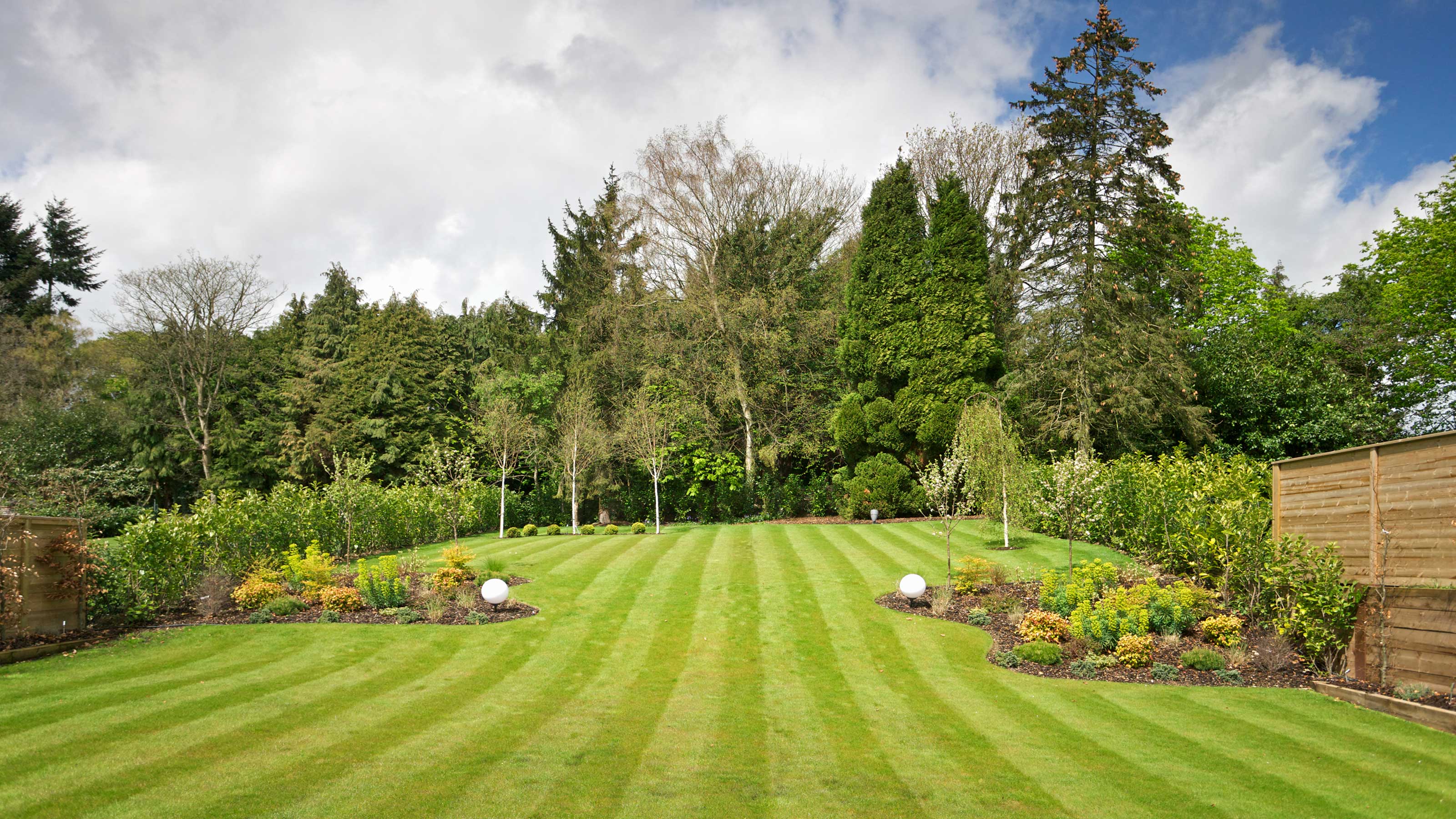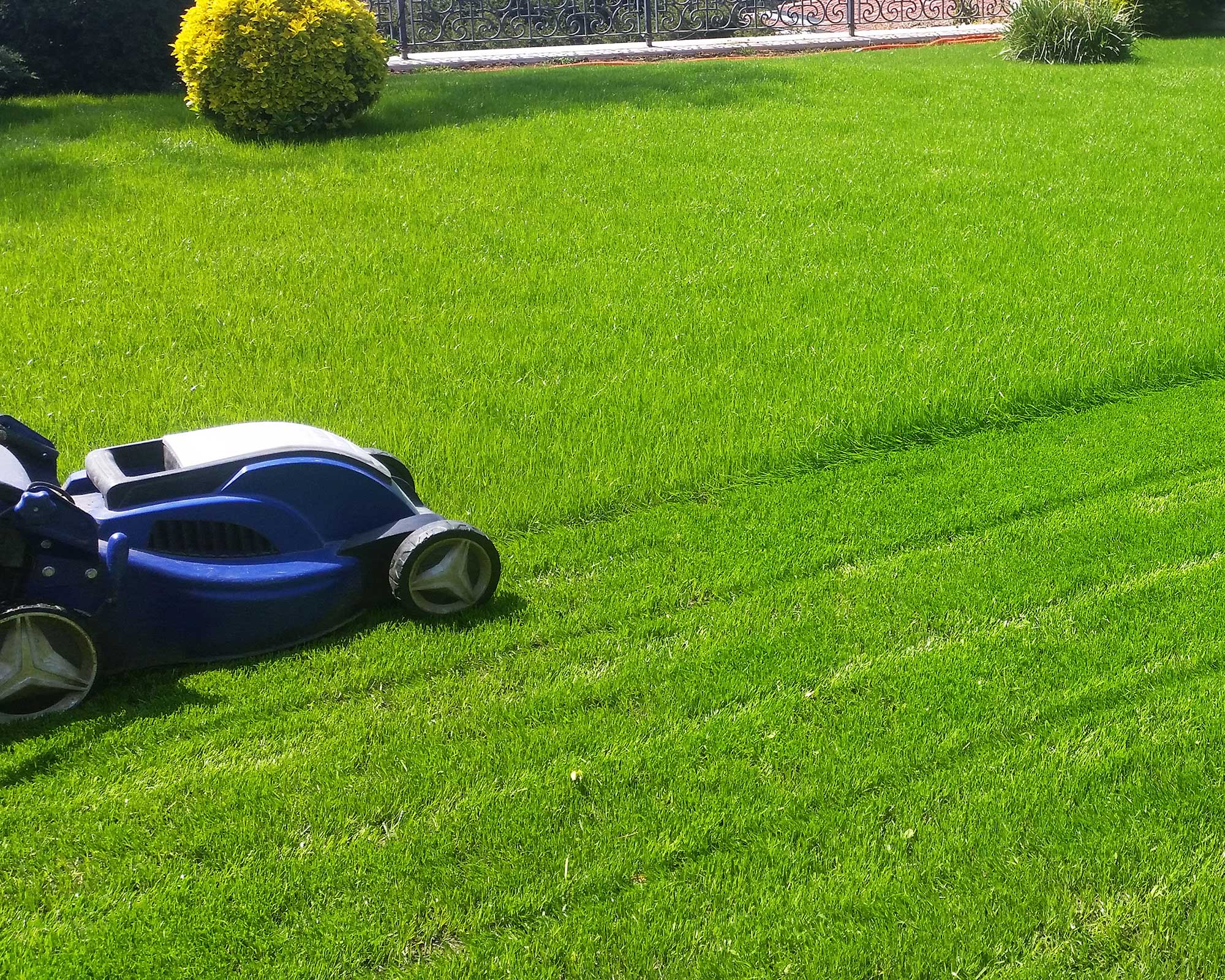How to mow stripes on a lawn: 3 simple steps for impressive results
Our tips on how to mow stripes will give your turf that traditional look that always looks smart


Ever wondered how to mow stripes? Granted, it takes a bit of practice to get it perfect, but the overall technique is pretty straightforward.
Mowing the grass is a key part of lawn care. And while freshly-mown turf is one (very lovely) thing, adding stripes elevates the look to a whole other level. It's a classic style that will add a touch of formality to a plot, as well as help to elongate a space. And if you try it in your front yard as well as out back, it's bound to make a strong first impression on any visitors or passers-by.
We asked the experts to share their advice on how to achieve lawn stripes. All you need is your best lawn mower equipped with a rear roller, healthy grass, a dry day, and a bit of patience to give your patch of green a fresh new look.

Striping a lawn is simple once you have a few tricks up your sleeve
How to mow stripes in 3 easy steps
Creating stripes is slightly different from learning how to mow a lawn the usual way.
'Lawn stripes are created by the roller pushing the blades of grass forwards and pressing them down, as the mower passes over,' says Paul Hicks of STIHL. 'By always following the same stripe each time you mow, you will increase the definition of the stripes, as more of the grass will be pushed over.
'The actual stripe effect is caused by light reflecting off the grass,' he explains. 'The lighter shade comes from the blades of grass facing away from you and the darker shade is caused by shadows in the blades of grass facing you.'
The steps below explain how to mow stripes so you can recreate the look in your yard.
1. Ensure your lawn is healthy
Before you start striping, ensure your lawn is in good condition. 'A healthy lawn requires proper cutting, watering, fertilizing, and aerating on a regular basis, with an understanding of the right time to do each of these things,' says Paul.
We can help you on your way with our tips on how to aerate a lawn, and you might want to check out our guide to getting rid of lawn weeds, too.

For the best results, ensure your lawn is healthy before you mow stripes
2. Mow around the perimeter
Once you've got your lawn looking luscious, it's time to wheel out the mower.
It's generally best to mow around the perimeter of the garden first, particularly in plots where it's difficult to turn the mower at either end, suggests the lawn experts at Flymo. This achieves a more even cut and nicer-looking lawn.
Don't cut your lawn too short, says Paul. This will impact the stripes, so he suggests going no shorter than 1.18in (30mm).

Mowing around the edges of your garden first will help you achieve a more even look with your stripes
3. Add your stripes
'When adding the first stripe to your lawn, ensure you are at right angles to the perimeter,' says Flymo. Use an object, like a fence, as a rough guide. When you get to the end of the lawn, turn your lawn mower around and come back in the opposite direction.
Flymo continues: 'When adding new stripes, try and overlap the previous stripe slightly.' They explain how this will help ensure you don't miss any patches of grass which would spoil the look of your lawn. 'Try and use something obvious as a guide to create the same overlap distance for each stripe to make sure your stripes are equal in width.'
Once you've got the technique down, you may fancy branching out a bit and getting more creative with lawn mowing patterns. 'The beautiful thing about striping a lawn is that you don't have to walk in a straight line for the effect to work,' says Paul. 'You can create just about any pattern you like, as long as you continue to bend the grasses in opposite directions.'

You can opt for straight lines or try something more creative
How often do you need to mow stripes into a lawn?
To keep stripes looking tip-top, it's best to mow at least once a week, says Paul.
'If you cut the grass regularly and add stripes, you must remember to alternate the mowing direction every couple of weeks,' Flymo adds. 'Failure to do this will encourage uneven and indirect growth, which may affect the look and feel of your lawn.'

Lawn stripes will elevate the look of your summer garden
How do you create wider stripes on a lawn?
'To add a wider stripe to your lawn, simply go down your second stripe again in the same direction as the previous line to ensure the grass is bent in the same direction,' says Flymo.

The garden was always a big part of Holly's life growing up, as was the surrounding New Forest where she lived. Her appreciation for the great outdoors has only grown since then. She's been an allotment keeper, a professional gardener, and a botanical illustrator – plants are her passion.
